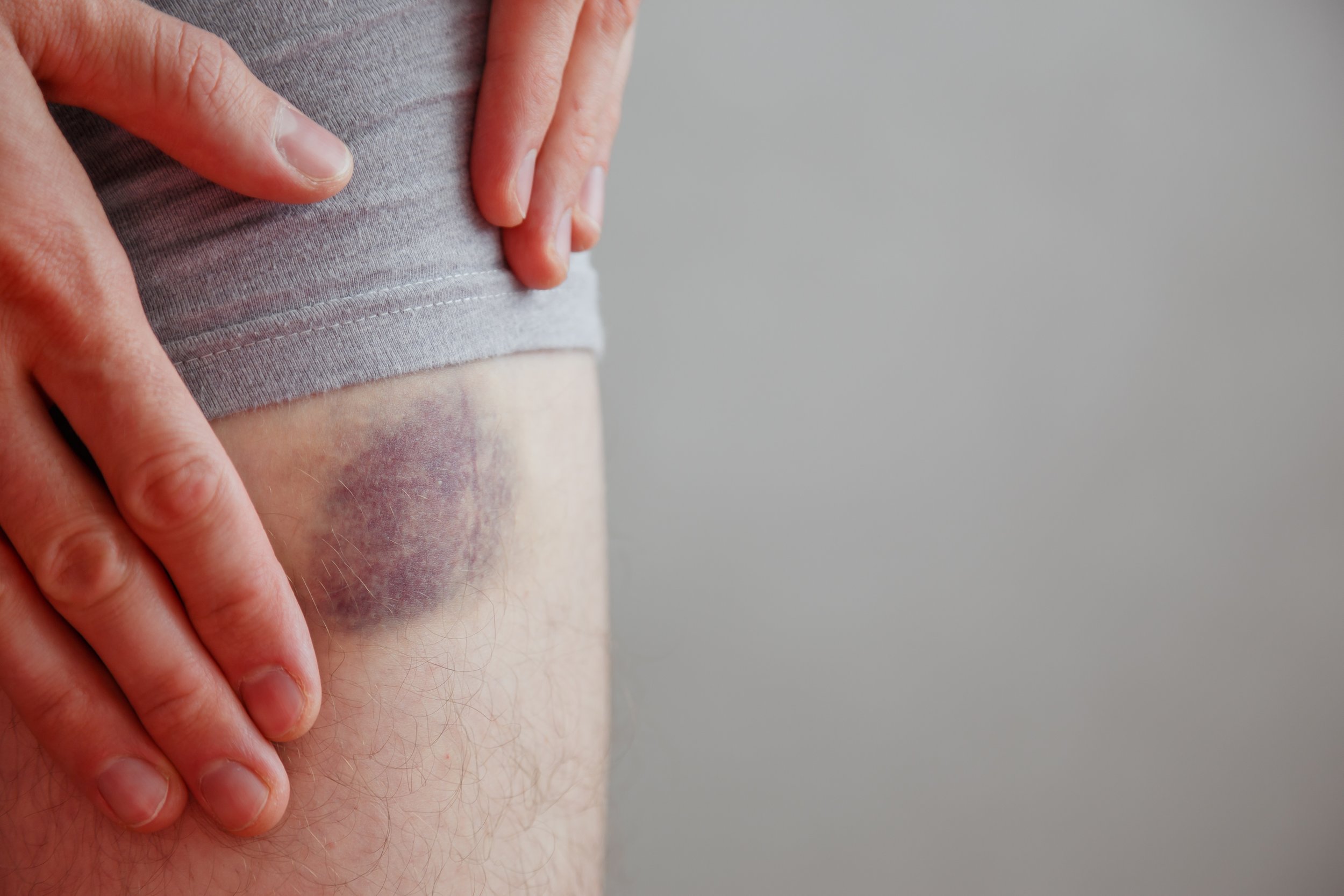A contusion, commonly known as a bruise, is a type of injury where there is damage to the blood vessels and tissues beneath the skin due to a blunt force impact. The force causes small blood vessels called capillaries to break, leading to bleeding into the surrounding tissue. Initially, contusions often appear as a reddish or purplish discoloration on the skin, which can change color as the body gradually absorbs the leaked blood.
Physical therapy can play a significant role in the healing and recovery process for contusions. Here's how physical therapy can help:
Reducing Swelling and Inflammation: Contusions often result in swelling and inflammation around the affected area. Physical therapists can use techniques like manual lymphatic drainage, ice, and gentle exercises to help reduce swelling and promote better circulation, which aids in the removal of excess fluids and waste products from the injured area.
Pain Management: Contusions can be painful, especially in the early stages. Physical therapists can employ various modalities such as ultrasound, electrical stimulation, and gentle massage to alleviate pain and discomfort.
Restoring Range of Motion: Contusions can lead to stiffness and limited range of motion in the surrounding joints. Physical therapists can design specific exercises and stretches to prevent joint and muscle stiffness and improve flexibility.
Preventing Muscle Atrophy: If the contusion is near a muscle, there's a risk of muscle atrophy (muscle wasting) due to inactivity and pain. Physical therapists will guide patients through gentle strengthening exercises to maintain muscle strength and prevent atrophy.
Scar Tissue Management: As the contusion heals, scar tissue can form in the affected area. Physical therapists can use techniques like manual therapy and soft tissue mobilization to prevent excessive scar tissue formation and ensure that the tissue heals with better flexibility and function.
Progressive Rehabilitation: Depending on the severity of the contusion, a physical therapist will design a progressive rehabilitation program tailored to the individual's needs. This program will gradually increase in intensity and complexity as the patient's healing progresses.
Knowledge Is Power: Physical therapists educate patients on proper body mechanics, movement patterns, and activities to avoid during the healing process. They also provide guidance on when it's safe to return to regular activities and sports to prevent re-injury.
It's important to note that the timeline for healing from a contusion can vary based on the severity of the injury, the individual's overall health, and other factors. While physical therapy can aid in the healing process, it's essential to follow the guidance of a healthcare professional, and if you suspect a severe injury, it's always best to consult a medical doctor before starting any rehabilitation program.

